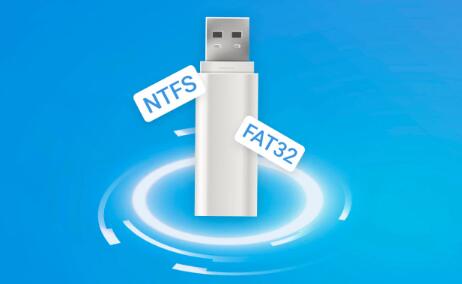These portable storage devices are prone to accidental deletion, corruption, or hardware failure. Fortunately, there are various USB data recovery software options available, including free versions that can help you retrieve lost files.
Data Loss on USB Drives
Common Causes of Data Loss
Accidental Deletion: Users may inadvertently delete important files.
Corrupted Filesystem: Improper ejection or system crashes can lead to corruption.
Virus/Malware Attacks: Malicious software can compromise data integrity.
Physical Damage: Dropping or exposure to extreme conditions can harm USB drives.
Importance of USB Data Recovery Software
When data loss occurs, the first step is to stop using the device to prevent overwriting the deleted files. USB data recovery software can scan the device and recover lost data, making it essential for both individuals and businesses.
Features to Look for in USB Data Recovery Software
File Support: Check if the software supports various file types, such as documents, images, videos, and more.
Ease of Use: A user-friendly interface can make the recovery process smoother, especially for those less tech-savvy.
Scanning Modes: Look for software that offers both quick and deep scan options to recover different types of lost data.
Preview Function: A preview feature allows you to see recoverable files before restoring them.
Compatibility: Ensure the software works with your operating system (Windows, macOS, etc.).
Top Free USB Data Recovery Software Options

Panda Assistant
Panda Assistant is a powerful data recovery software designed to help users retrieve lost or deleted files from various storage devices, including external hard drives, USB drives, and memory cards. With an intuitive interface, Panda Assistant makes it easy for both beginners and experienced users to navigate the recovery process.
The software supports a wide range of file formats, including documents, images, videos, and audio files, ensuring that you can recover almost any type of lost data. Panda Assistant offers both quick and deep scanning options, allowing users to quickly find recently deleted files or perform thorough scans for more complex recovery situations.
One of its standout features is the ability to preview recoverable files before restoring them, helping users make informed decisions about which files to recover. Additionally, Panda Assistant prioritizes data safety, ensuring that the recovery process does not compromise the integrity of the remaining data.
TestDisk
Overview: An open-source software tool primarily designed for recovering lost partitions.
Features:
Powerful command-line interface.
Can recover deleted files from FAT32. NTFS, and ext2 filesystems.
Usage: Best for advanced users familiar with command-line tools.
PhotoRec
Overview: A companion tool to TestDisk, focused on recovering multimedia files.
Features:
Supports a wide range of file types.
Works on various platforms.
Usage: Run alongside TestDisk, ideal for recovering photos and videos.
EaseUS Data Recovery Wizard Free
Overview: A well-known data recovery tool with a free version.
Features:
Recovers up to 2GB of data for free.
Intuitive interface with guided recovery.
Usage: Install, choose your USB drive, and follow the prompts to recover data.
Disk Drill
Overview: Offers a free version for recovering lost files on USB drives.
Features:
Supports multiple file formats.
Simple, easy-to-navigate interface.
Usage: Scan the USB drive, select files to recover, and restore them quickly.
MiniTool Power Data Recovery
Overview: A free version available for basic recovery tasks.
Features:
Recovers data from damaged USB drives.
Supports various file systems.
Usage: After installation, run a scan, select files, and restore them.
How to Use USB Data Recovery Software
Step-by-Step Guide
Stop Using the USB Drive: Immediately cease any operations on the drive to prevent overwriting data.
Download and Install Software: Choose one of the recommended software and install it on your computer.
Connect the USB Drive: Insert the USB drive from which you want to recover data.
Launch the Software: Open the data recovery tool and select the USB drive from the list of available devices.
Choose Scan Type: Opt for either a quick scan for recently deleted files or a deep scan for more extensive recovery.
Preview Recoverable Files: After the scan, review the list of recoverable files.
Select Files for Recovery: Mark the files you wish to restore and choose a destination for the recovered data (preferably not on the same USB drive).
Complete the Recovery Process: Follow the software prompts to finish the recovery process.
Tips for Effective Data Recovery
Regular Backups: Always back up important files regularly to avoid data loss.
Safely Eject USB Drives: Always use the “Eject” feature before removing a USB drive from your computer.
Use Antivirus Software: Protect your USB drives from malware that can corrupt files.
Check File Integrity: Occasionally check the files on your USB drive for any corruption.
Test Recovery Software: Before a crisis occurs, familiarize yourself with data recovery software and its functionalities.
Free USB data recovery software can be a lifesaver when facing data loss. Whether due to accidental deletion, corruption, or physical damage, using the right tools can help retrieve valuable information. By understanding the features, using reliable software, and following best practices, you can effectively recover your lost data and prevent future issues.
About us and this blog
Panda Assistant is built on the latest data recovery algorithms, ensuring that no file is too damaged, too lost, or too corrupted to be recovered.
Request a free quote
We believe that data recovery shouldn’t be a daunting task. That’s why we’ve designed Panda Assistant to be as easy to use as it is powerful. With a few clicks, you can initiate a scan, preview recoverable files, and restore your data all within a matter of minutes.
Subscribe to our newsletter!
More from our blog
See all postsRecent Posts
- Data recovery salt lake city utah 2025-04-18
- Data recovery sacramento 2025-04-18
- Data recovery miami 2025-04-18

 Try lt Free
Try lt Free Recovery success rate of up to
Recovery success rate of up to









